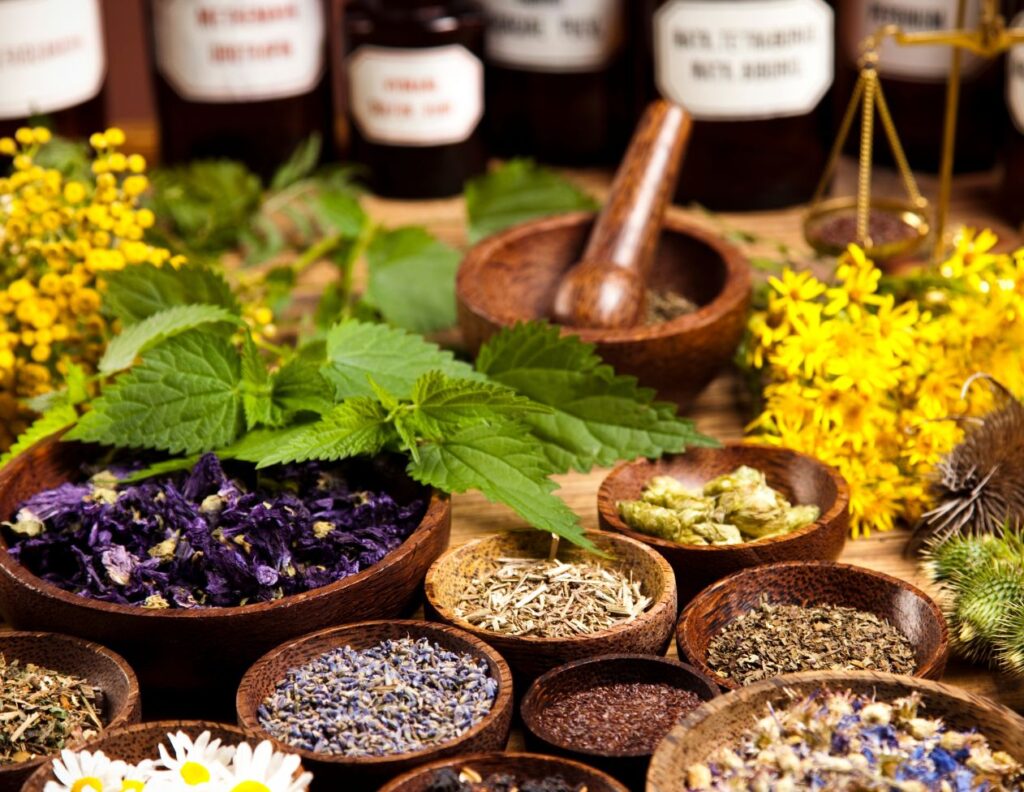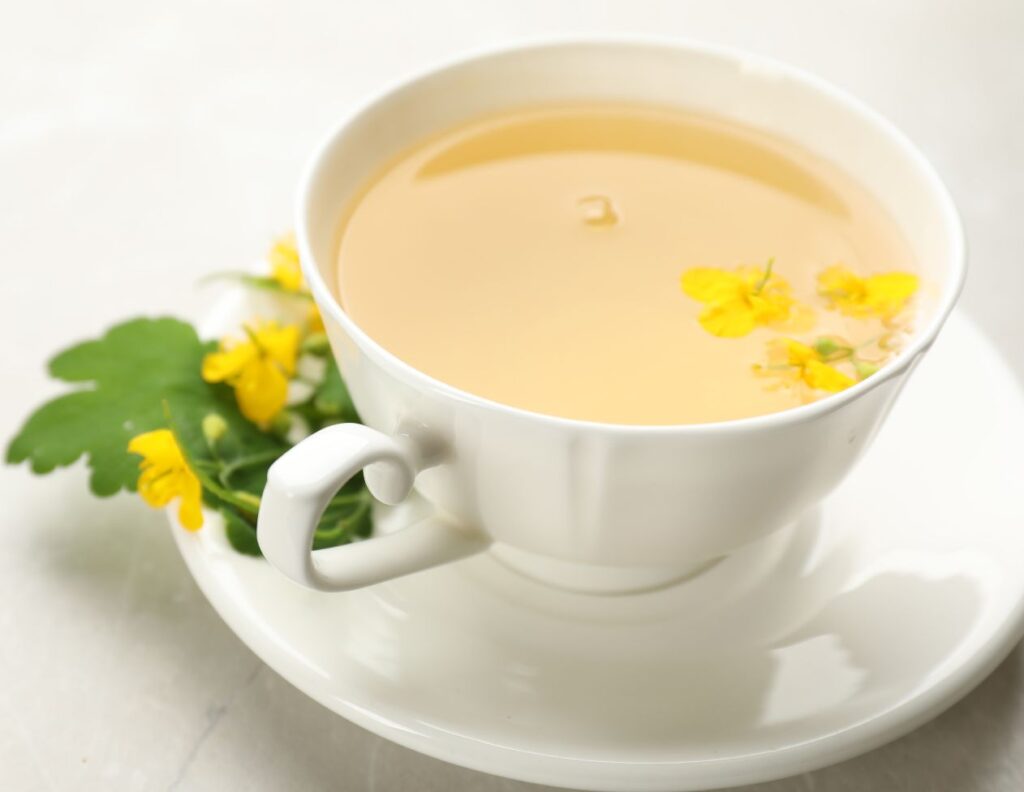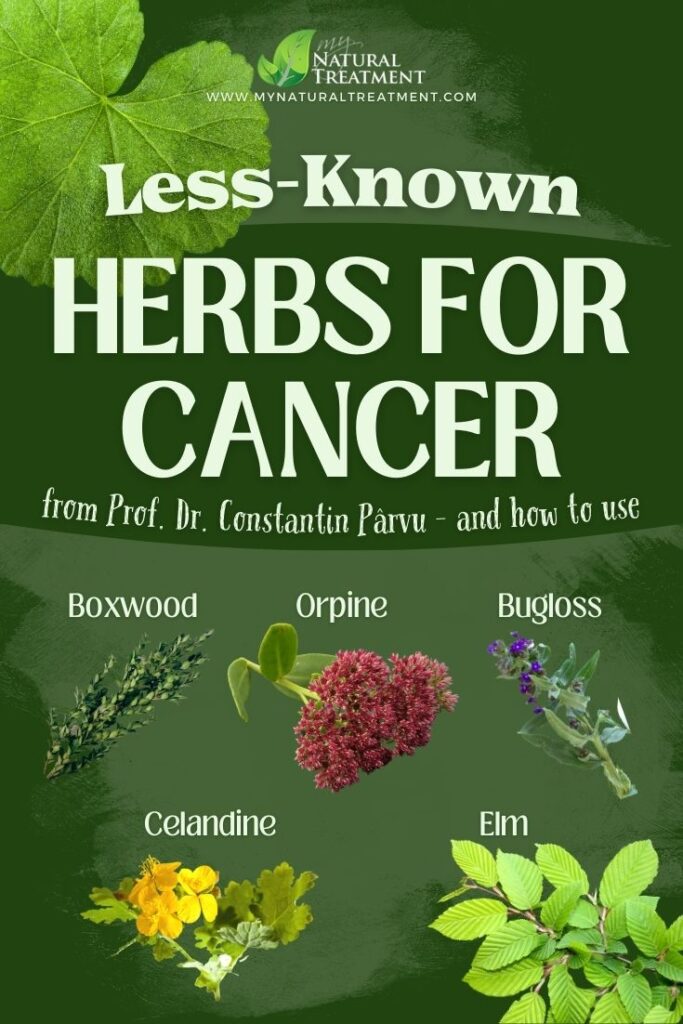Discover 5 less-known herbs for cancer and how to use them at home, from Prof. Dr. Constantin Pîrvu’s personal experience.
Prof. Dr. Constantin Pîrvu is a laureate of the Romanian Academy Awards for his amazing works on botany and phytotherapy and is the author of the most extensive Romanian herbal encyclopedia ever written entitled “The Universe of Plants”. The less-known cancer herbs with remedies, recipes, and little stories that follow belong exclusively to Mr. Constantin Parvu and are the fruit of his ethnobotanical and folklore research. Here are Prof. Dr. Constantin Pîrvu‘s less-known herbs for cancer with recipes.

In This Article You Will Find:
5 Less Known Herbs for Cancer and How to Use Them
1. Orpine Root
(Sedum telephium syn. Hylotelephium telephium)
“Orpine is an ornamental garden plant, which I found out about 20 years ago, in a sub-mountainous village called Maneciu-Pământeni in Prahova County, Romania. A kind of miracle happened there. A fifty-year-old woman, with stage III cervical cancer and who could no longer be operated on, was sent home to die, with the prognosis that she only had a few weeks left to live. But she was cured with a remedy from the village elders based on orpine root. Here is how to use this herb for cancer.”
How to Use Orpine for Cancer
Harvest the orpine roots in the autumn, wash them very well, crush them, and fill half of a glass jar with them. Fill the rest of the jar with 30-40-degree alcohol, then seal. Leave the jar in the sun for ten days, shaking daily for a better extraction of the active principles. After ten days, strain the orpine root tincture and pour it into amber bottles. The daily dose is one tablespoon three times a day before a meal, i.e. first thing in the morning, before lunch, and before dinner.
This woman, named Filipoiu Ioana, followed this natural treatment for two months and then went for a check-up. Her doctor saw a strong remission of the cervical tumor, the cancer shrinking from stage III to stage I, and she could undergo surgery. After the surgery, she continued to take this herb for cancer and finally beat cancer. Years after following this treatment, Prof. Dr. Constantin Pîrvu met her, and she was perfectly healthy and strong.

2. Boxwood
(Buxus sempervirens)
Boxwood is usually seen as a hedge and most people are unaware of its anticancer properties. Its leathery dark green leaves contain a cytostatic alkaloid called buxenine-G, which has a strong inhibitory action on cancer cells. The following recipe is recommended for cancer patients even in advanced stages.
“I saw the most spectacular result with the common box tincture in the treatment of colon cancer in an 80-year-old man, who had a malignant tumor the size of an orange on the large intestine. Doctors didn’t want to operate on, due to age and size of tumor and gave him two months to live. The man followed the boxwood treatment and started to feel better. I haven’t kept in touch with him for some time, and I don’t know how he feels at the moment, but the result in itself is already exceptional.”
How to Use Common Box for Cancer
Cut 300 grams of the tender tips of the boxwood (twigs with leaves), wash very, very well, and cut them into very small pieces right after harvesting. Soak the chopped plant in two liters of alcohol of 30-40 degrees in a glass jar. Seal and leave to macerate for 7 days. Strain the common box tincture through a piece of sterile cheesecloth, and pour in small, amber bottles.
For the first 5-7 days, the dosage is one teaspoon three times a day, before the main meals. Starting with day 8, the dosage is increased to one tablespoon three times a day, before the main meals for 2 months.
Boxwood tincture has a rather unpleasant taste, but its effects are exceptional. This preparation not only acts in the long term as an inhibitor of the development of malignant tumors but also comforts the patient immediately (a few hours after administration). This is one of the most powerful herbs for cancer, especially skin cancer, breast cancer, bladder, kidney cancer, and colon cancer.

3. Common Bugloss
(Anchusa officinalis)
Common bugloss is a medicinal plant that prevents the proliferation of various types of cancer, tissue damage, and premature wear of the body. According to Prof. Dr. Constantin Pîrvu, bugloss is one of the most underrated herbs for cancer.
“I have seen exceptional results with this plant, even on an acquaintance, Mrs. S., who used a remedy prepared from common bugloss leaves to treat genital cancer. The lady I’m talking about, who suffered from genital cancer confirmed by biopsy, followed this natural treatment 12 years ago and is still alive, and feels and looks amazing.”
How to Use Common Bugloss for Cancer
Harvest one and a half kilos of this plant (root, stem, leaves, and flowers), remove all the dead parts, wash well, and pass it through the juicer or food processor while still fresh. Put it in a large glass jar and cover it with 3 liters of natural red wine and 2.2 kilograms of acacia honey, and mix very well with a wooden spoon.
Seal the jar and put it in a dark spot to macerate for the following 5-7 days. Strain and pour this medicinal wine into large glass bottles. For the first five days, the dosage is a teaspoon two hours before each main meal. 3 times a day. Starting with day six, the dosage is one teaspoon, but one hour before the meal (not two). Continue for two months.

4. Greater Celandine
(Chelidonium majus)
Greater celandine is recommended for curing all forms of cancer because it supports liver function and detoxes the liver, which is key in healing from cancer, especially when tumor cells are phagocytosed in the healing process.
“Many of my cancer patients, who no longer had the vital strength to fight the disease, already suffering from nausea, loss of appetite, and general weakness, recovered spectacularly with the use of greater celandine.“
How to Use Greater Celandine for Cancer
Steep five grams of dry and chopped celandine (stems and leaves) into a liter (4 cups) of boiling water for 12 hours in an enameled pot (do not use metal at all). You can steep overnight. Immediately after straining the infusion, add 200 grams of acacia or wildflower honey to it (not any other kind) and mix. The dosage is one spoonful of this sweet celandine tea every hour, 10-12 times a day.

5. Elm Bark
(Ulmus)
Elm is a widely spread tree species throughout the world, but little known for its therapeutic value, especially its anticancer effects. According to Prof. Dr. Constantin Pîrvu, the elm bark collected from the young branches can be used to prepare a fantastic antitumor remedy.
“Elm bark has very strong detoxifying and purifying properties, and is useful in a series of wear and tear diseases, such as rheumatism, gout, and damaging of blood vessels. Elm bark is also effective in the treatment of leukemia, a disease for which modern medicine has too few cures. “
How to Use Elm for Cancer
Cut a few maximum one-finger thick young elm branches (the leaf is at the base, next to the petiole) then remove the bark with a knife. This operation is easiest to do in the spring when the bark does not adhere very strongly to the stem. Dry the bark until it snaps. Add 2-3 teaspoons of dried and ground elm bark into a cup of water (200 ml) at room temperature overnight. Strain and set aside.
Simmer the used bark into two cups of water for 10 minutes, then leave the decoction to cool down and strain. Finally, combine the cold maceration with the warm decoction and drink throughout the day. The treatment has the best effects if the tea is drunk in the morning, every day, for at least two months.
Read Also: The Absolute Best Cancer-Fighting Food
Prof. Dr. Constantin Pîrvu is a member of the Romanian Society of Biology, the Romanian Society of Ecology, and the Foundation of Prahova Scientists, and in 1997 was nominated among the first 500 scientists in the world in the UK. He carried out ethnobotanical and herbal therapeutic research on plants for human and veterinary treatment and discovered 39 new species in Romania’s flora and fauna. If you’ve enjoyed discovering these amazing herbs for cancer and how to use them according to Prof. Dr. Constantin Pîrvu, please share this article. Stay healthy, naturally!
Share on Pinterest ❤️


